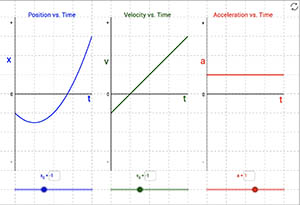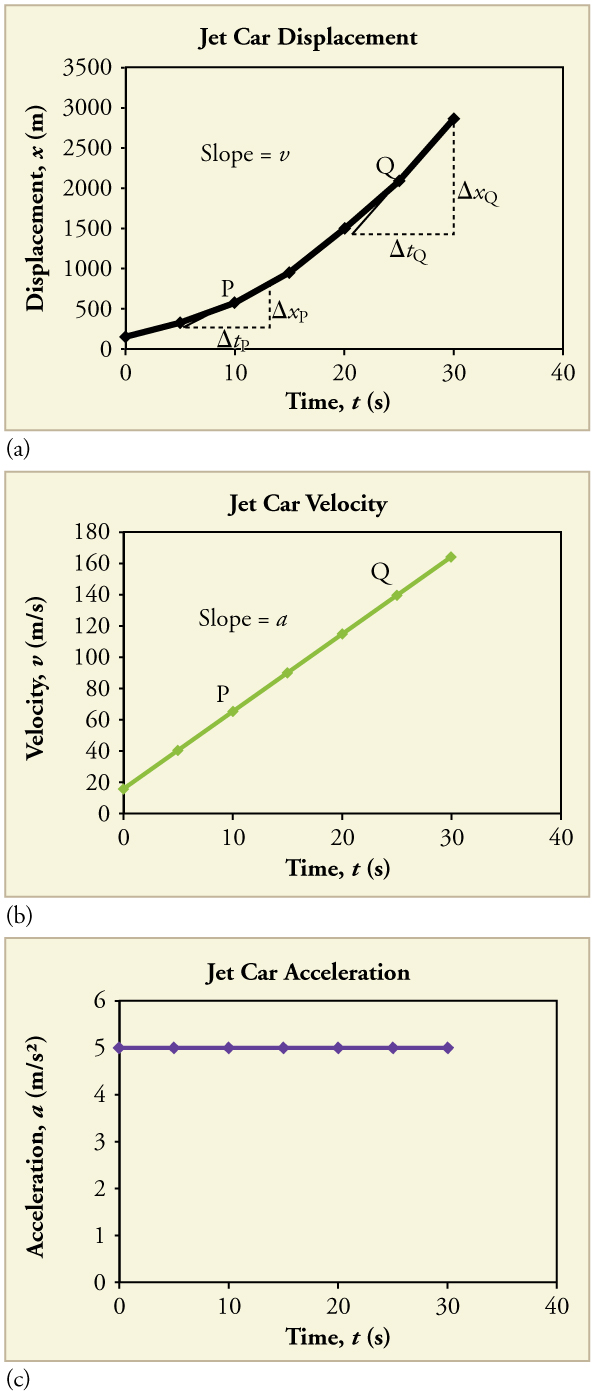

After 7 seconds, the skydiver has fallen from rest a distance of 240 meters. Since we're given a displacement-time graph, use the displacement-time relationship, a.k.a. The second method uses the graph and an equation of motion.
#MOTION GRAPH PHYSICS 1 PROFESSIONAL#
Free fall acceleration on Earth is just a number - a number that you should memorize if you have a professional reason for learning physics. The first is to just agree with what the text description says. There appear to be 4 valid ways to determine the acceleration in the first 7 seconds. This is the answer to this part of the problem. Straight lines on a displacement-time graph indicate constant velocity.
#MOTION GRAPH PHYSICS 1 FULL#
If I were to ask this question of my students, however, I would accept both answers as reasonable and award full credit - as long as there were no other errors like missing units.įrom 7 to 17 seconds, the graph is straight. I think it's more likely that the skydiver was almost in free fall than the curve was almost straight in the last half second before the chute opened. I said it sort of looks straight in the last half second, but sort of doesn't cut it. We don't really know the slope of the tangent to the left side of 7 seconds. The second answer is definitely a mathematical approximation. Free fall in an atmosphere is technically impossible, which means the first answer is only true in an idealized world. So which answer is correct? Well neither. Slope is velocity on a displacement-time graph. In the last half second, from 6.5 to 7.0 seconds, the graph looks very nearly straight and the skydiver appears to drop from 90 to 60 meters. We could also use the graph itself (instead of the description of the graph) to solve this part of the problem. Up is positive on this graph, so gravity will have to be negative. We could use the first equation of motion for an object with a constant acceleration. One would be to use the fact stated in the stem of the problem - that the skydiver was in free fall. There are at least two ways to determine the velocity just before the parachute opened. When acceleration is zero, all three graphs should lie on the horizontal axis. When acceleration is negative, the velocity-time graph should have a negative slope and the displacement-time graph should bend downward.

When acceleration is positive, the velocity-time graph should have a positive slope and the displacement-time graph should bend upward. Since the acceleration is constant, the displacement-time graph will always be a parabola, the velocity-time graph will always be straight, and the acceleration-time graph will always be horizontal. When velocity is zero, the displacement-time graph should be horizontal. When velocity is negative, the displacement-time graph should have a negative slope. When velocity is positive, the displacement-time graph should have a positive slope. Since the velocity is constant, the displacement-time graph will always be straight, the velocity-time graph will always be horizontal, and the acceleration-time graph will always lie on the horizontal axis. When the object is accelerating, the line should be curved. Pay attention to the shape of each segment. To find displacement, calculate the area under each interval.įind the cumulative areas starting from the origin (given an initial displacement of zero) 00 s →


Since the acceleration is constant within each interval, the new graph should be made entirely of linked horizontal segments.ĭisplacement is the product of velocity and time. To find acceleration, calculate the slope in each interval. The motion of this object is described for several segments in the graph below.Īcceleration is the rate of change of displacement with time. You can say what direction it's moving, how fast it's going, and whether or not it's accelerating, however. You can't immediately determine where the object is from this graph. Do not read it as if it was showing you position. The problem presents us with a velocity-time graph.


 0 kommentar(er)
0 kommentar(er)
